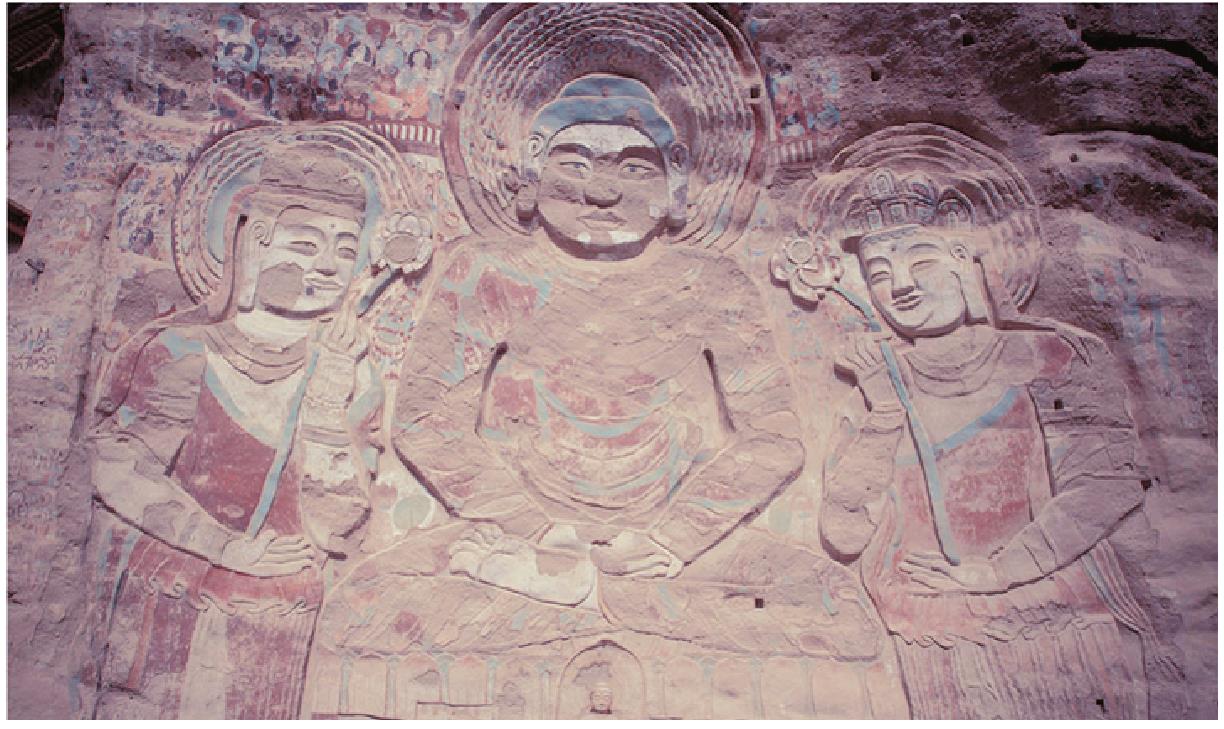拉梢寺
北朝石窟寺。一称大佛崖。全国重点文物保护单位。位于武山县榆盘乡楼湾村。建寺时自岩脚搭木至山巅,待修建完毕后拆木而下,故名。有岩崖摩崖高浮雕石胎泥塑释迦牟尼大佛和大势至、观世音菩萨,兼绘壁画、高塑小佛像。大浮雕占总面积的 50%,大佛高 40 余米,结跏趺坐于莲台上,禅定印,圆脸胖身,通肩袈裟,菩萨头戴花蔓冠,项佩条带式连珠璎珞,袒上身,手执莲花。里层为北周原作,表层为元代妆修。佛座从仰俯莲瓣形,上列雕塑动物图案,有狮、鹿、象等,每排 6~10个,中部头向前正视,余皆头侧向两侧,表现了释迦的另一种护法形式。莲台正中凿一人字顶浅龛,内高塑一佛二菩萨,其中立佛仅存头部,丰满圆润,系唐代佳作。大佛身上侧有北周立佛。北侧一长方浅平龛,内摩崖阴刻北周明帝宇文毓三年题记一方,面积 1.65 平方米,魏体竖写 12 行 99 字。文曰:“维大周明皇帝三年岁次己卯二月十四日使持节柱国大将军陇右大都督秦渭河鄯凉甘瓜成武岷洮邓文康十四州诸军事秦州刺史蜀国公尉迟迥与比丘释道减于渭州仙崖敬造释迦牟尼像一区愿天下和平四海安乐众生与天地久长周祚与日月俱永。”崖面还存小龛 8 个,其最低小龛造像为元代作品,大佛头顶千佛壁画,遮檐上部悬塑喇嘛教塔,均为元代之作。

拉梢寺壁画